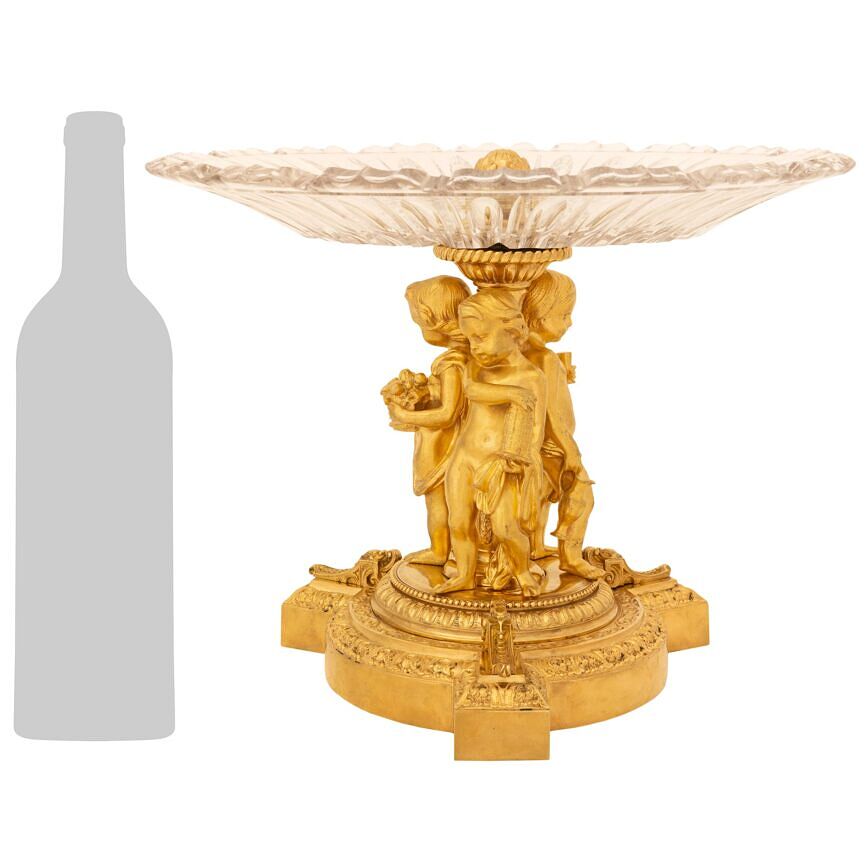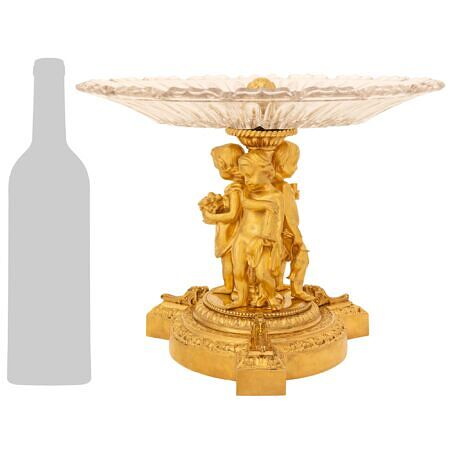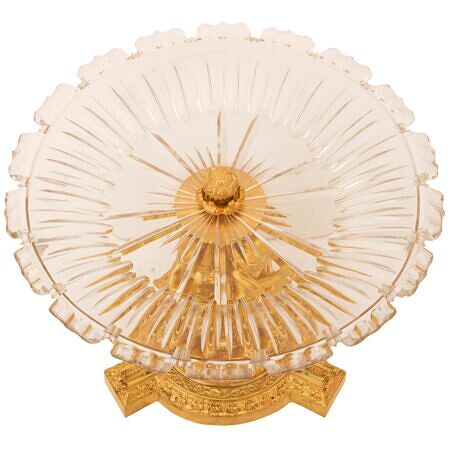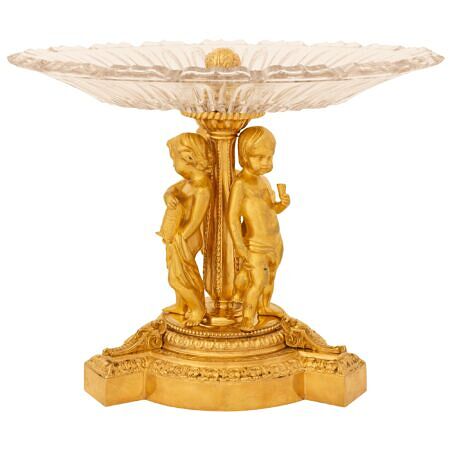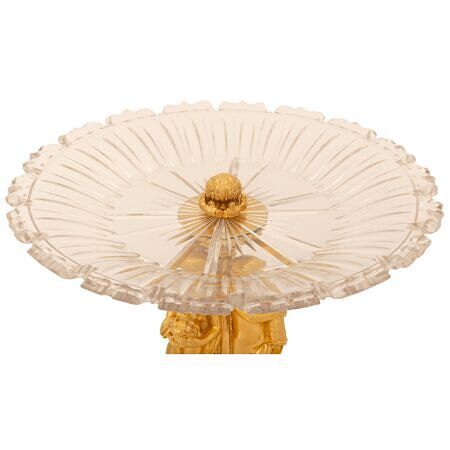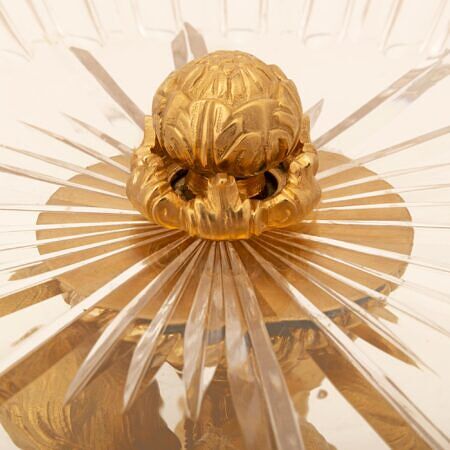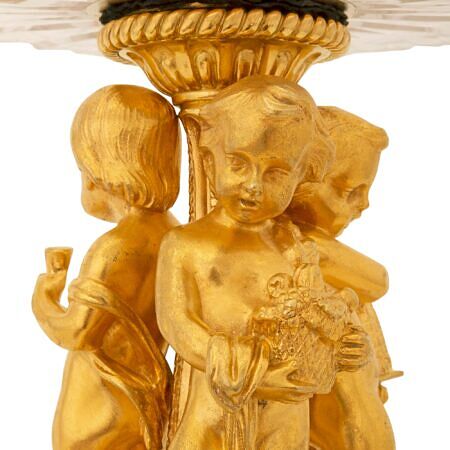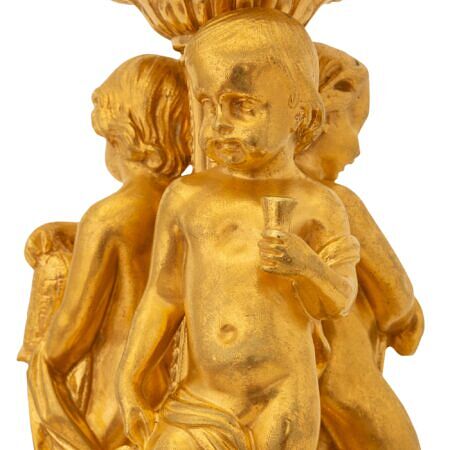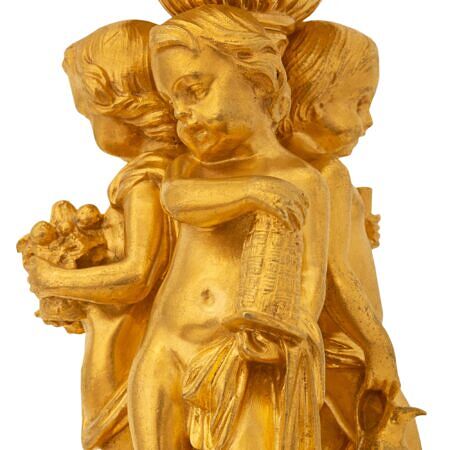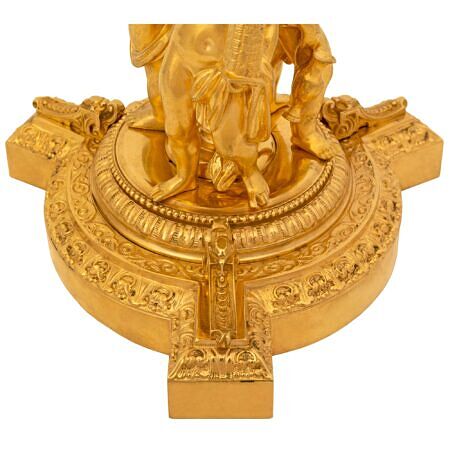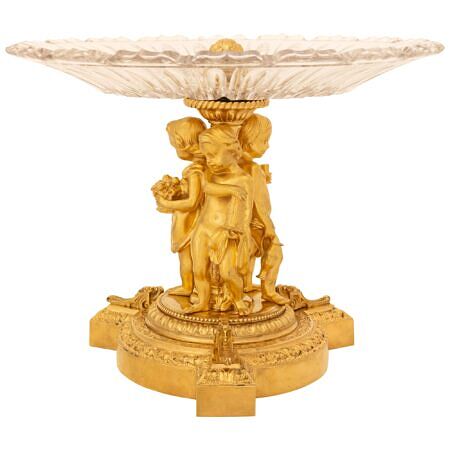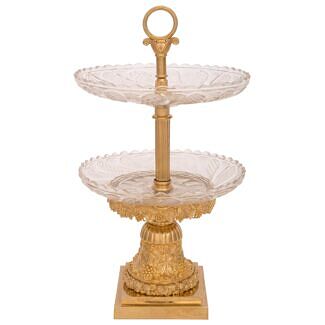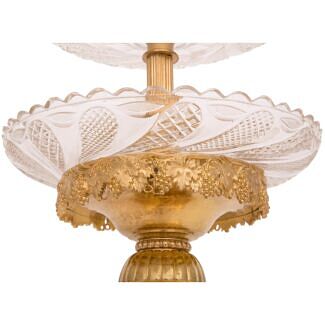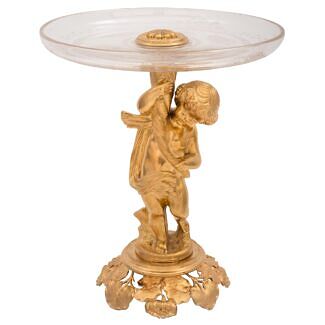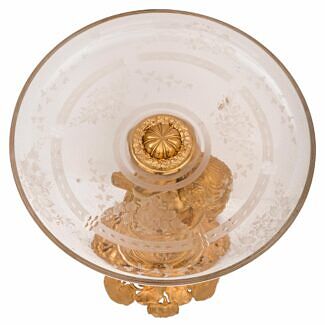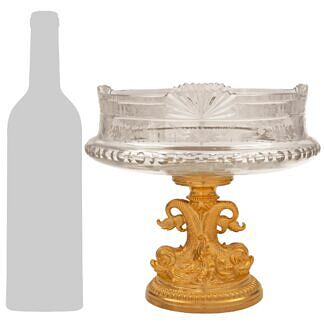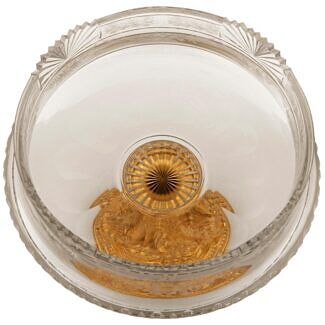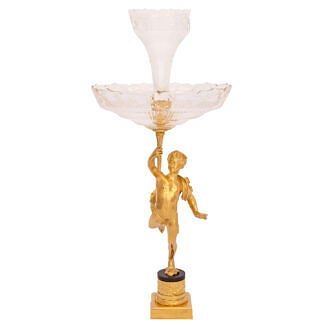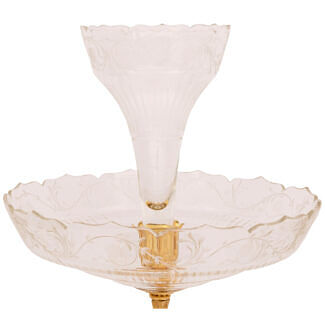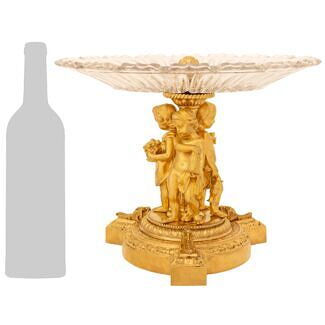A French 19th century Louis XVI st. Belle Époque period ormolu and Baccarat crystal centerpiece
A most elegant French 19th century Louis XVI st. Belle Époque period ormolu and Baccarat crystal centerpiece. The centerpiece is raised by a circular base with three protruding reserves decorated with beautiful finely detailed mottled wrap around foliate, reeded and... — Read More
A most elegant French 19th century Louis XVI st. Belle Époque period ormolu and Baccarat crystal centerpiece. The centerpiece is raised by a circular base with three protruding reserves decorated with beautiful finely detailed mottled wrap around foliate, reeded and beaded bands, and luxuriant scrolled elements. At the center are three charming ormolu cherubs each draped in a fine flowing fabric with one carrying a basket full of ripe fruit and blooming flowers, another holding a vessel, and the other a cup. Above is the remarkable circular Baccarat crystal dish with exceptional cut floral designs at the border and beautiful fluted star burst like cuts all centered and affixed by an outstanding ormolu floral finial. All original gilt throughout. — Read Less
- Item # 13219
-
H: 10.25 in L: 13 in D: 13 in
H: 26 cm L: 33 cm D: 33 cm
- France
- 19th Century
- Baccarat Crystal, Ormolu
-
Belle Époque Period Read More,
Louis XVI st. Read More
(Belle Époque Period) -
Gaining its name from the optimistic and peaceful period of time between 1871 and World War I, Belle Epoque means “beautiful period”, and occurred during the era of the Third French Republic. This period of economic, colonial, and scientific prosperity brought with it a flourishing artistic climate with numerous literal, musical, theatrical, and visual masterpieces being created.
The Eiffel Tower, which was constructed between 1887 and 1889, served as the entrance to the World’s Fair held in Paris. That same year, the Moulin Rouge cabaret in Paris was founded and showcased the now more mainstream styles of performance including can-can dancing. Belle Epoque dancers and singers were Paris celebrities and became immortalized by the poster arts of Toulouse-Lautrec.
Leading up to this period in 1865, the American Civil War was coming to a close, with France proposing to construct the Statue of Liberty as a joint effort with the United States. France would be responsible for the statue, with America constructing the pedestal. Created to celebrate the nation’s success in building a viable democracy, the statue would stand as a symbol of friendship between the French and American people.
(Louis XVI st.) -
Also known as Louis Seize, Louis XVI's style is a style of architecture, furniture, decoration, and art created during Louis XVI’s 19-year reign in France, just before the French Revolution.
Thought to be a reaction and juxtaposition to the prior more elaborate styles, Louis XVI style developed at the end of the Baroque Period and continued until the birth of French Neoclassicism.
King Louis XVI showed little enthusiasm for the old world styles of the Baroque Period and he sought out a create a new “beau ideal” that focused on the purity and grandeur of Ancient Romans and Greeks.
Inspired by Ancient Roman architecture and art, distinct features of the Louis XVI style are linear lines, small repeated motifs, floral medallions hanging from ribbons, acanthus leaves, urns, dolphins, ram, and lion heads, and griffins.
Greco-Roman elements, often used in earlier and later French styles, were also quick common and included fluted and twisted columns, Caryathids, and corbels.
- Baccarat Read More
Baccarat Crystal is a French manufacturer of fine crystal glassware located in Baccarat, France. The company owns two museums: the Musée Baccarat in Baccarat and the Musée Baccarat in Paris.
In 1764 King Louis XV of France gave permission to found a glassworks in the town of Baccarat.
Production consisted of window panes, mirrors and stemware until 1816 when the first crystal oven went into operation. By that time over 3000 workers were employed at the site.
Baccarat was famous and requested by many royal houses and received its first royal commission in 1823. This began a lengthy line of commissions for royalty and heads of state throughout the world. In 1855 Baccarat won its first gold medal at the Worlds Fair in Paris after which they began to mark their creations towards the end of the 19th century.
Payment Plan Option Learn More Choose the payment plan option at checkout and customize this payment option with our team. Payment plans are flexible and items will ship once all payments are received.


